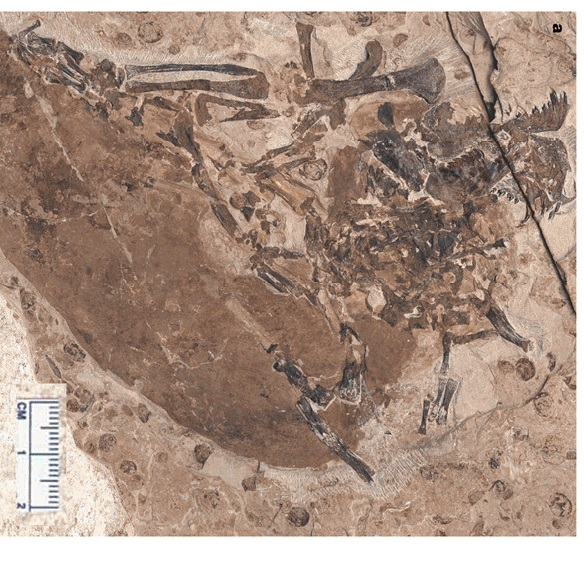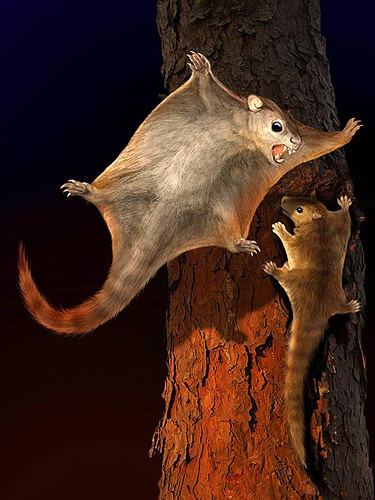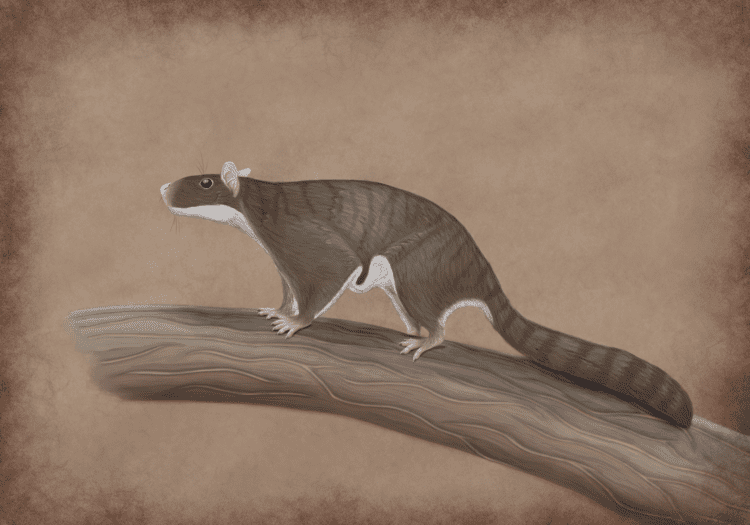Order †Eutriconodonta Scientific name Volaticotherium Rank Genus | Phylum Chordata Alliance †Volaticotheria | |
 | ||
Similar Mammal, Castorocauda, Repenomamus, Fruitafossor, Eutriconodonta | ||
Volaticotherium antiquum was an ancient gliding insectivorous mammal that lived in what would become Asia during the Jurassic period, around 164 mya. It is the only member of the genus Volaticotherium.

It had a gliding membrane, sometimes compared to modern-day flying squirrel, that extended not just between the limbs and at least the tail base, but also the digits, "sandwiching" them. It was densely covered by fur. The tail was flat, increasing the airfoil, and the limbs were proportionally long, comparable to those of modern flying and gliding mammals. The toes were grasping, as typical for arboreal mammals; the hand, on the other hand, was "poorly preserved". The teeth of Volaticotherium were highly unusual, possessing long, curved, backwards-pointing cusps, possibly used for shearing; this, combined with the long canines, this indicates a carnivorous diet, which at its small size was probably composed by insects. This is supported by a study ranking it among insectivorous taxa, while the related Argentoconodon ranked in carnivorous taxa.

The discovery of Volaticotherium provided the earliest-known record of a gliding mammal (70 million years older than the next oldest example), and provided further evidence of mammalian diversity during the Mesozoic Era. The closely related Argentoconodon shows similar post-cranial adaptations for aerial locomotion also seen in Volaticotherium.

The phylogenetic analysis conducted by the authors of the description of Volaticotherium antiquum recovered it as the sister taxon of the clade that contained, among other taxa, eutriconodonts, multituberculates, spalacotheriid and tinodontid "symmetrodontans", dryolestids, metatherians (including marsupials) and eutherians (including placental mammals). As the analysis did not place Volaticotherium within any of the previously known main groups of Mesozoic mammals, the authors of its description erected a separate family Volaticotheriidae and order Volaticotheria for it. However, Zhe-Xi Luo (2007) mentioned that Volaticotherium might actually be a eutriconodont. This was eventually confirmed by the phylogenetic analyses conducted by Leandro C. Gaetano and Guillermo W. Rougier (2011, 2012); these analyses recovered Volaticotherium antiquum as a eutriconodont that belonged to the family Triconodontidae and subfamily Alticonodontinae, and was particularly closely related to the genera Argentoconodon and Ichthyoconodon, and possibly Triconolestes. More recent studies keep this relationship, but move Volaticotherium, Argentoconodon, Ichthyoconodon and Jugulator (and, possibly by association, Triconolestes) in a more basal position among triconodontids, away from alticonodontines.

The only known fossil of Volaticotherium was recovered from the Daohugou Beds of Ningcheng County, Inner Mongolia, China. The age of the Daohugou Beds is currently uncertain and the subject of debate, but most studies suggest an age of around 164 plus or minus 4 million years ago. The description was published in an issue of the journal Nature.

